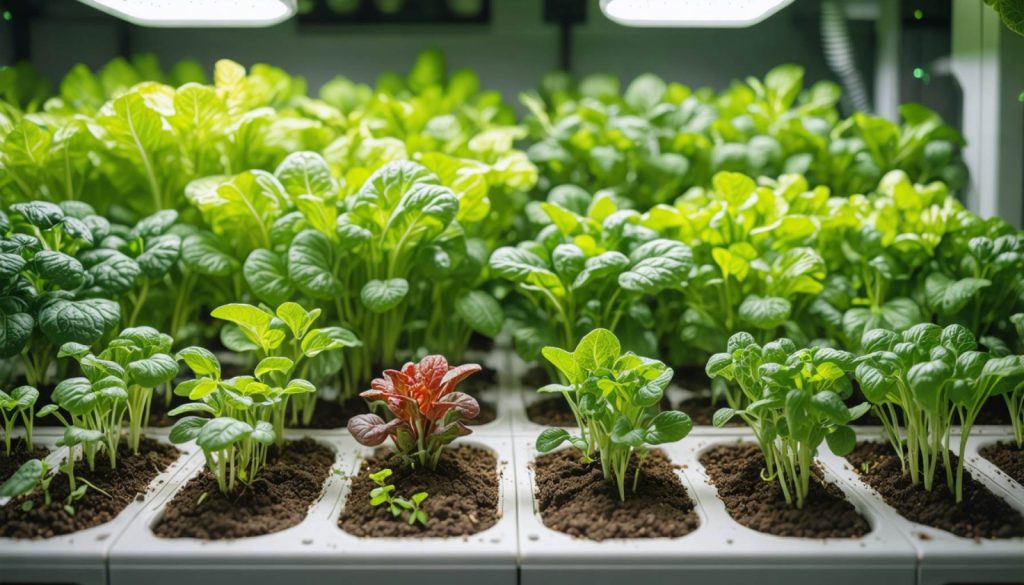
- Urban farming is transforming into a high-tech solution, integrating AI for sustainable city living.
- AI analyzes data to optimize plant conditions, maximizing crop yields and minimizing waste.
- Real-time data allows AI-driven farms to adjust conditions, reducing susceptibility to weather and human error.
- AI enhances resource efficiency by conserving water and fertilizers, promoting eco-friendly agriculture.
- Sophisticated algorithms optimize plant layouts, enabling more food production per square foot in limited urban spaces.
- AI-driven farms reduce food transport needs, lowering the carbon footprint and securing urban food supplies.
- AI and urban farming integration could address global food demands and support sustainability.
Cities increasingly face the pressure of feeding their swelling populations. Rising high above the hustle and bustle of traffic, a silent revolution is underway. Urban farming, once limited to hobbyists and community leaders, is blossoming into a high-tech solution for sustainable city living. What makes this rapid transformation possible? The powerful integration of artificial intelligence.
Imagine walking through a skyscraper, not filled with offices but with rows of vibrant greens, tomatoes, and herbs flourishing under perfect conditions—all thanks to AI. This isn’t science fiction; it’s starting to unfold right now.
AI Provides Precision: In the realm of urban farming, AI’s ability to analyze vast quantities of data becomes invaluable. Machines now learn the optimal conditions for each plant down to the finest details—temperature, humidity, nutrient levels, and even the precise spectrum of light. Such precision ensures each crop receives exactly what it needs to thrive, maximizing yield and minimizing waste.
Real-Time Data and Decision Making: Equipped with sensors, these AI-driven farms gather real-time data on everything from air quality to plant health. AI systems interpret this data and make split-second decisions to adjust conditions, promising a harvest less prone to the whims of weather or human error.
Resource Efficiency: Urban farms powered by AI significantly reduce the use of water and fertilizers. With capabilities to predict the necessary nutrients and supply them only when needed, AI helps in conserving resources, making urban agriculture more sustainable and eco-friendly.
Space Optimization: Space in cities is scarce, but AI makes it possible to grow more food in less space. Sophisticated algorithms design farm layouts that optimize how plants are positioned, ensuring light is distributed evenly and growth is maximized per square foot. Vertical farms, using these intelligent layouts, can produce up to 390 times as much food per acre as traditional methods.
AI-driven urban farms promise to revolutionize how we feed our cities. By marrying technology with agriculture, urban centers could transform from food deserts into lush, self-sustaining oases. This progression not only helps to secure a stable food supply but also reduces the carbon footprint associated with transporting food over long distances.
The Green Machine: Picture a future where every urban building contributes to feeding its community. Skyscrapers become lush with life, using AI to optimize every square inch for productivity and resilience. Indeed, it’s an inspiring vision where cities nourish both their inhabitants and the environment.
The evolution of urban farming into a tech-savvy powerhouse doesn’t stop at city borders. If applied broadly, this approach could help meet the world’s escalating food demands, setting a precedent for a future where technology and nature flourish together.
Key Takeaway: Artificial intelligence stands as the pivotal force driving urban farming into a new era of precision, sustainability, and efficiency. With its profound ability to optimize space and resources, AI is setting the stage for cities that not only survive but thrive. As we stand on the brink of this agricultural transformation, it’s clear: the future of food lies not just in the soil but in the circuits of cutting-edge AI.
How AI-Driven Urban Farming is Transforming Our Cities and Feeding the Future
As the global population continues to climb, cities around the world are grappling with the challenge of adequately feeding their growing numbers. Urban farming, now powered by the remarkable capabilities of artificial intelligence (AI), emerges as a revolutionary trend for sustainable living. From skyscraper farms to AI precision, here’s an expanded look at how this transformation is unfolding and what you can anticipate.
How Does AI Make Urban Farming More Effective?
1. AI Precision and Plant Care:
AI’s superior data analysis allows it to learn and optimize conditions for plant growth meticulously. This means that crops receive just the right temperature, humidity, nutrients, and spectrum of light that they need, which not only ensures healthier plants but also maximizes yield while minimizing waste.
2. Data-Driven Decisions:
Equipped with an array of sensors, AI-driven urban farms continuously collect data on air quality, plant health, and other critical factors. AI systems then interpret this data in real time to adjust farming conditions automatically, leading to consistent and reliable harvests.
3. Conserving Resources:
With AI’s predictive capabilities, urban farms use resources such as water and fertilizers only when needed. This significantly reduces waste and conserves vital resources, contributing to a more sustainable farming model.
4. Space Optimization:
In space-constrained urban environments, AI helps design farm layouts to maximize the usage of available space. By optimizing light distribution and plant positioning, urban farms can produce significantly more food per acre compared to traditional methods.
Real-World Use Cases
– Singapore’s Sky Greens: One of the world’s first low-carbon, hydraulic-driven vertical farms, Sky Greens integrates AI technologies to monitor and manage plant growth efficiently, providing fresh produce to the local community.
– Brooklyn’s Square Roots: Utilizing shipping containers, this facility uses AI to monitor and control the indoor environment precisely, allowing for year-round farming regardless of external weather conditions.
Market Forecasts & Industry Trends
The urban farming industry is poised for substantial growth. As cities become more receptive to sustainable practices, the urban vertical farming market is expected to grow at a CAGR of xx% from 2023 to 2030 (source: Market Insights Report).
Controversies & Limitations
Despite the potential benefits, AI-driven urban farming also faces challenges including high initial investment costs and technology adoption barriers. Furthermore, there are concerns about over-reliance on technology, which could impact traditional farming knowledge and skills.
Security & Sustainability
Security in AI-driven systems is crucial since cyber-attacks could disrupt food production. Implementing robust cybersecurity measures in urban farms is essential to protect these critical infrastructures.
Quick Tips for Aspiring Urban Farmers
– Leverage Technology: Start with small-scale AI solutions like smart sensors to optimize resource use and monitor plant health.
– Seek Community Support: Engage with local urban farming communities for shared knowledge and resources.
– Explore Funding Opportunities: Look for government grants or private investments focused on sustainability to help fund your urban farming activities.
Conclusion
Urban farming enhanced by AI technology is not just a vision but a currently unfolding reality. By adopting these smart, resource-efficient methods, cities worldwide can meet the growing food demands while nurturing a sustainable future.
For more information, visit AGriculture and Urban Agriculture—both authoritative sources for the most recent trends and insights in the agricultural space.



